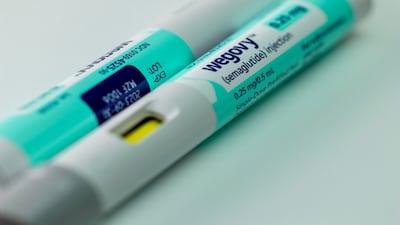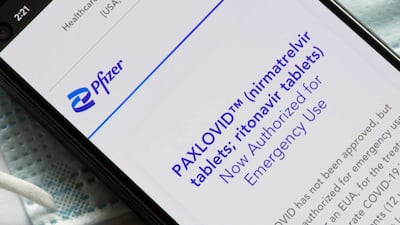COVID-19
From solving delivery challenges for Moderna's COVID-19 vaccine to pioneering the next generation of programmable medicines, the 2025 Rising Leader provides mid-career reflections.
Pfizer/BioNTech’s COVID-19 vaccine Comirnaty toppled after recording the highest ever annual sales for a pharmaceutical in 2022, while Novo Nordisk’s Ozempic climbed rapidly. But Merck & Co’s immuno-oncology blockbuster Keytruda was secure in the number one spot in 2023 as COVID-19 receded.
A complex transformation is underway as client proposes to acquire CDMO facilities that vaccinated the world against the COVID-19 pandemic for pivot to the obesity epidemic.
New markets, a patent cliff, an M&A rebound and clinical trial catalysts. How will it all play out for the biopharma sector in 2024?
While biotech layoffs and big pharma restructuring dominate the news in 2023, the sector’s job market remains buoyant.
Staff burnout, workforce attrition and patient backlogs are testing the resiliency of health systems. Crisis is not too big a word. Against this backdrop, GE HealthCare commissioned a major report, Reimagining Better Health 2023, which suggested ways of increasing trust and confidence in healthcare provider systems as they evolve.
Infex CEO Peter Jackson discusses the state of antimicrobial resistance in the UK, and globally. He highlights the potential of a new “Netflix” style subscription model for antibiotic reimbursement, as well as future challenges for biotechs in the anti-infectives space.
Messenger RNA (mRNA) prophylactic vaccines have made major breakthroughs in 2020 and 2021 with both the Pfizer/BioNTech and Moderna COVID-19 vaccines gaining approval in more than 150 countries. These mRNA COVID vaccines have been developed much faster and with superior clinical profiles when compared to other more conventional modalities.
After a comparatively subdued 2022 in terms of M&A and other deal-making, a strengthening currency and interest in new areas such as digital tools and cell and gene therapy might see a rebound in activity this year, which should also see domestic approvals of several potential blockbusters and more support for bioventures.
The worst of COVID-19’s disruption appears to be in the pharma supply chain’s rearview mirror, but logistics stakeholders still have a number of questions to answer and challenges to overcome as they attempt to become future-proof.
Pfizer catapulted back into the lead in the pharmaceutical rankings on the strength of COVID-19 revenues while BioNTech and Moderna both made the list for the first time.
Pent-up trial demand during 2020 plus trial modernization strategies yields bumper performance in 2021 as research priorities revert to pre-pandemic trends.
Benoit Opsomer, vice-president and head of bioprocessing, Asia Pacific, Merck Life Science, explains how recent targeted CDMO buyouts put the German group in pole position with services across the mRNA value chain, even as it supports global players such as BioNTech. Striking multi-country expansion of manufacturing footprint, including in China, is also underway amid rising demand for biopharma single-use assemblies.
How do you send 90,000 employees home and still bring a COVID-19 vaccine to market in record time? Pfizer showed the way and at a recent virtual event, senior vice-president Robert Brown revealed how the "secret sauce" of digitalization continues to help cut medical legal review times, crunch clinical trial duration and reduce service interruptions.
In the third part of this special focus on mRNA manufacturing, In Vivo looks at the many directions mRNA platforms can expand, with a major focus on optimizing cellular microenvironments for safety and efficacy.
In the second part of In Vivo's series on mRNA manufacturing, we look at the technology behind the Moderna and Pfizer/BioNTech COVID-19 vaccines. Experts in the field are working on a variety of improvements that will enable quicker, cheaper, surer development and production of what could turn out to be a wide array of vaccines and therapeutics to be churned out by emerging mRNA platforms.
Although procedure volumes have mostly recovered from the shock of COVID-19 two years ago, the effects of the pandemic on the medtech sector and the economy overall will be felt for years to come. In recent analyst and sales and earnings presentations, CEOs of major medtech companies faced questions about how their company is handling these major "macro" issues.
In the first of a three-part series on the evolution of mRNA manufacturing, this article looks back to before the pandemic, when dogged mRNA researchers and entrepreneurs labored in obscurity pursuing the dream of revolutionizing healthcare by commandeering the body’s own protein building process to generate quicker, cheaper vaccines and therapeutics. Then the mRNA COVID-19 vaccines stunned the world.
Pfizer social media announcement that it’s seeking full approval for the oral COVID antiviral raise questions about where the line is on promotion versus other communications, FDA’s ability to regulate pharma on social media, and the unique considerations of promotion under EUAs.
BD CEO Tom Polen is at the bottom of the pyramid – it’s where he wants to be and is best positioned to continue the company’s transition to focusing on high-growth spaces, as set out in the BD2025 strategy.




















